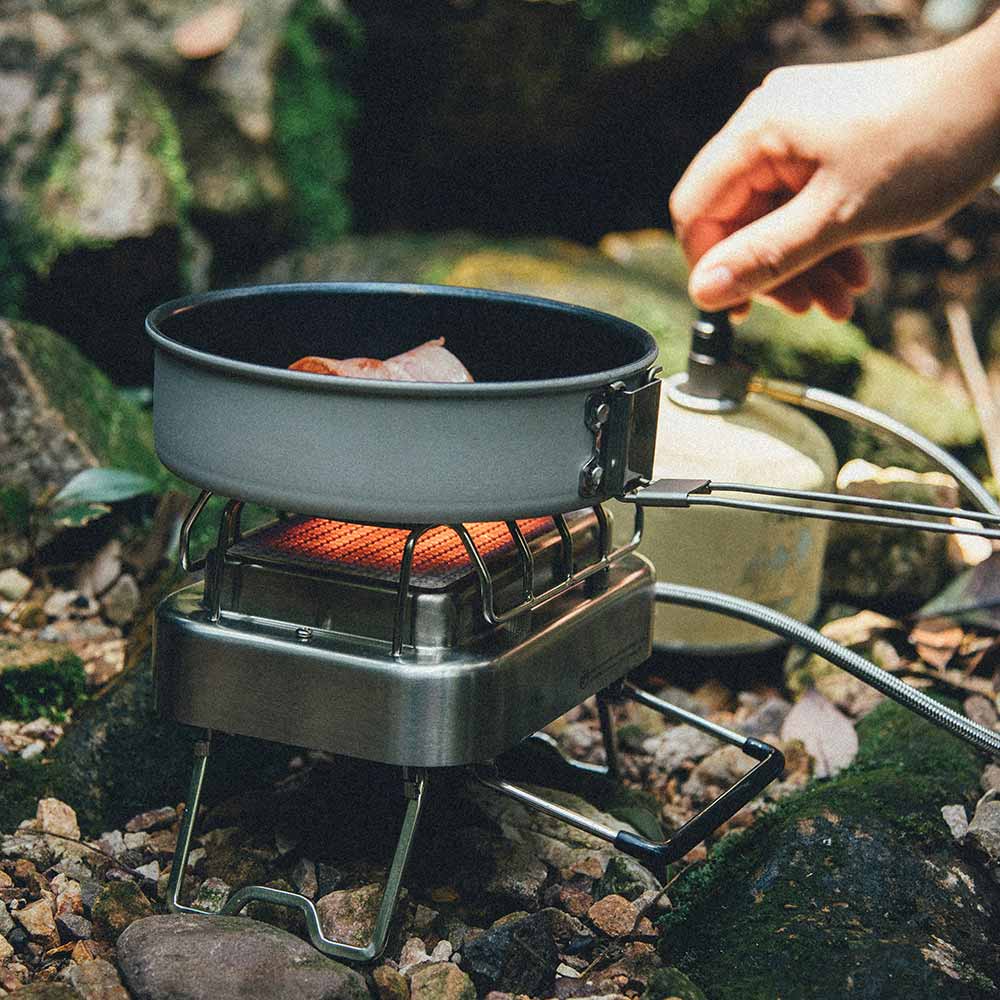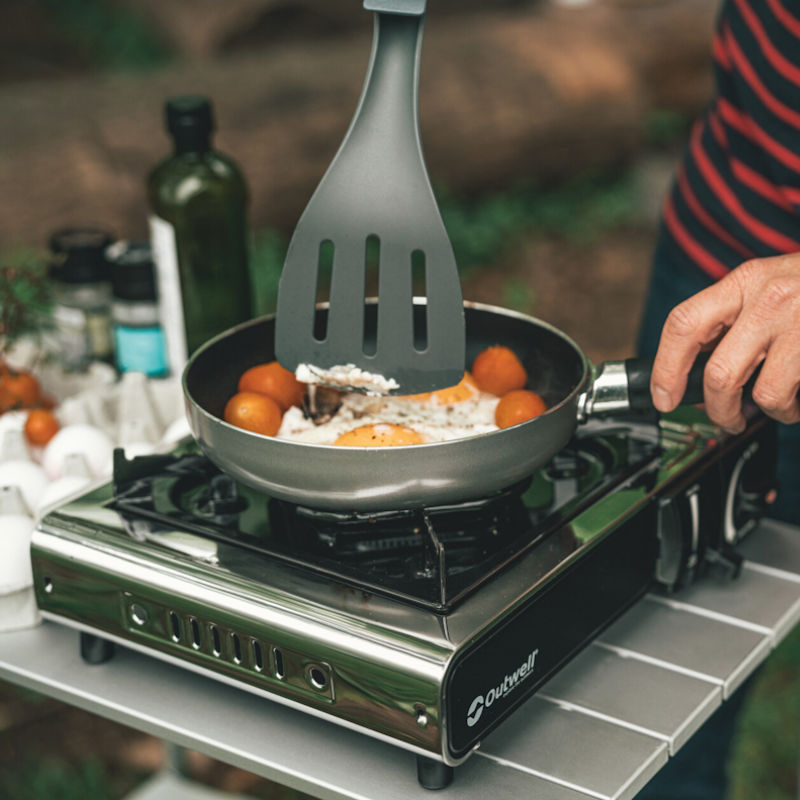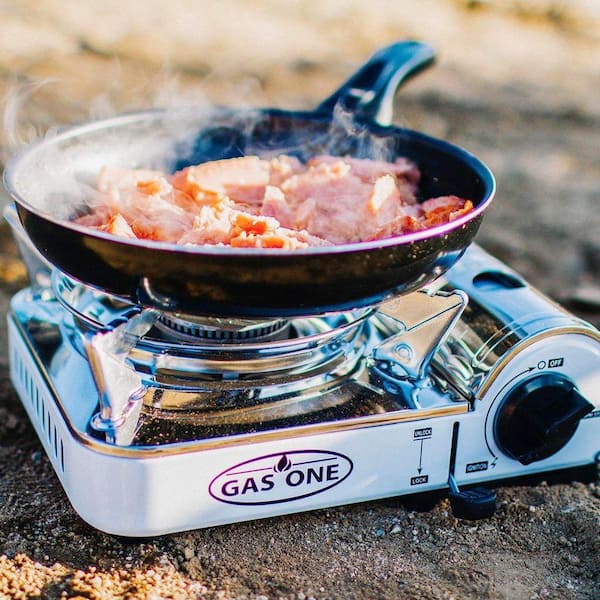Introduction
When it comes to enjoying the great outdoors, having the right camping stove can make all the difference. Whether you’re a seasoned outdoor enthusiast or a first-time camper, having a reliable cooking method is essential for creating delicious meals and staying fueled during your adventures. In this guide, we’ll explore the different types of camping stoves available, discuss their pros and cons, and help you choose the best option for your next outdoor excursion.
Part 1: Types of Camping Stoves
Level 1: Canister Stoves
Canister stoves are compact, lightweight, and easy to use, making them a popular choice for backpackers and minimalist campers. These stoves use pre-filled canisters of fuel, typically a blend of propane and butane, which can be easily attached and detached for hassle-free cooking. Canister stoves are known for their quick boil times and precise flame control, making them ideal for boiling water, simmering sauces, and preparing simple meals on the trail.
Level 2: Liquid Fuel Stoves
Liquid fuel stoves, such as white gas or kerosene stoves, are versatile and efficient options for camping in remote or extreme conditions. These stoves require pumping pressurized fuel from a separate fuel bottle into the stove, providing a consistent and reliable flame for cooking. Liquid fuel stoves are known for their performance in cold weather and high altitudes, making them a favorite among mountaineers, winter campers, and long-distance hikers.
Part 2: Pros and Cons of Camping Stove Types
Level 1: Canister Stoves
Pros:
- Lightweight and compact for easy transport
- Quick and easy to set up and use
- Precise flame control for cooking versatility
- Minimal maintenance and cleaning required
Cons:
- Reliance on pre-filled canisters for fuel supply
- Limited performance in extreme cold or high altitudes
- Disposable canisters contribute to waste
Level 2: Liquid Fuel Stoves
Pros:
- Excellent performance in cold weather and high altitudes
- Versatile and reliable for long-term use
- Refillable fuel bottles reduce waste and cost
- Ability to burn a variety of liquid fuels for convenience
Cons:
- Requires more time and effort to set up and prime
- Heavier and bulkier than canister stoves
- Requires periodic maintenance and cleaning
Part 3: Factors to Consider When Choosing a Camping Stove
Level 1: Fuel Type
One of the most important factors to consider when choosing a camping stove is the type of fuel it utilizes. Canister stoves are convenient and easy to use, but canisters must be replaced when empty, creating waste and potential supply issues in remote areas. Liquid fuel stoves require more effort to operate, but the ability to burn a range of fuels provides flexibility and sustainability.
Level 2: Cooking Style
Consider your cooking preferences and meal plans when selecting a camping stove. If you primarily need to boil water for dehydrated meals and hot drinks, a simple canister stove may suffice. However, if you enjoy preparing elaborate meals with precise cooking control, a liquid fuel stove may better suit your needs.
Part 4: Maintenance and Safety Tips for Camping Stoves
Level 1: Cleaning and Storage
Proper maintenance of your camping stove is essential for optimal performance and longevity. After each use, clean the stove components with a soft brush or cloth to remove debris and food residues. Store the stove in a dry, ventilated space to prevent corrosion and deterioration.
Level 2: Safety Precautions
When using a camping stove, always follow the manufacturer’s instructions and safety guidelines to prevent accidents and injuries. Keep flammable materials away from the stove, ensure proper ventilation in your cooking area, and never leave the stove unattended while in operation. Familiarize yourself with the procedure for lighting and extinguishing the stove to avoid mishaps.
Part 5: Top Recommended Camping Stoves for Outdoor Enthusiasts
Level 1: MSR PocketRocket 2 Canister Stove
The MSR PocketRocket 2 is a high-performance canister stove that offers a lightweight and compact design ideal for backpacking and solo camping trips. With its fast boil times and precision flame control, this stove is a reliable option for quick meal preparation in the outdoors.
Level 2: Jetboil MiniMo Liquid Fuel Stove
The Jetboil MiniMo is a versatile and efficient liquid fuel stove that excels in cold weather and high-altitude conditions. Its integrated cooking system and regulated fuel delivery provide consistent performance for outdoor cooking enthusiasts who demand reliability and convenience.
Part 6: Types of Fuel for Camping Stoves
Level 1: Common Types of Fuel
- Propane: Propane canisters are widely available and easy to use. They provide a clean-burning, hot flame, making them a popular choice for campers.
- Butane: Butane canisters are similar to propane but are typically used in smaller, portable stoves. They are convenient for backpacking and hiking trips.
Level 2: Alternative Fuel Options
- Liquid fuel: Some camping stoves are designed to run on liquid fuels like white gas, kerosene, or unleaded gasoline. These fuels can be more versatile for different weather conditions and altitudes.
- Wood: For a more traditional camping experience, some campers opt for stoves that can burn wood. This allows for sustainability and a connection to nature, but requires more effort to gather and maintain a fire.
Part 7: Factors to Consider When Choosing a Camping Stove
Level 1: Size and Weight
- Backpacking stoves: For hiking and backpacking trips, lightweight and compact stoves are essential to minimize the weight of your gear.
- Base camp stoves: For car camping or group trips, larger stoves with multiple burners and a stable base are ideal for cooking bigger meals.
Level 2: Fuel Efficiency
- Liquid fuel stoves: When considering fuel efficiency, liquid fuel stoves are often preferred due to their ability to burn a variety of fuels and perform well in cold temperatures.
- Canister stoves: Canister stoves are convenient and easy to use, but may not be as fuel-efficient in extreme conditions.
Part 8: Maintenance and Safety Tips for Camping Stoves
Level 1: Regular Maintenance
- Clean the stove: Regularly clean the stove after each use to prevent clogs and ensure proper functioning.
- Check for leaks: Before using the stove, inspect the fuel lines and connections for any leaks or damage.
Level 2: Safe Operation
- Keep a fire extinguisher nearby: In case of emergencies, always have a fire extinguisher readily available.
- Proper ventilation: When using a camping stove, ensure there is proper ventilation to prevent carbon monoxide buildup. Avoid using stoves inside enclosed spaces.
Conclusion
In recent years, the popularity of portable backpacking stoves has grown significantly. These small, lightweight stoves are designed for minimalist backpackers and can easily fit in a backpack or pocket. They typically use small canisters of fuel, making them convenient and easy to use. While they may not be as powerful as larger stoves, they are a great choice for solo or small group camping trips.
When choosing a camping stove, it’s important to consider the type of fuel it uses, its size and weight, its cooking power, and its ease of use. Some stoves come with additional features such as wind screens, simmer controls, and piezo ignition systems, which can make cooking in the outdoors more convenient. A good camping stove can make a huge difference in the enjoyment of a camping trip, providing delicious meals and warm drinks even in the most remote and rugged locations.
Choosing the right camping stove is an important decision for any outdoor enthusiast. By considering the types of stoves available, their pros and cons, and factors such as fuel type and cooking style, you can select the best option for your needs. Remember to prioritize maintenance and safety, and explore top recommended stoves to ensure a successful and enjoyable outdoor cooking experience during your camping adventures.



